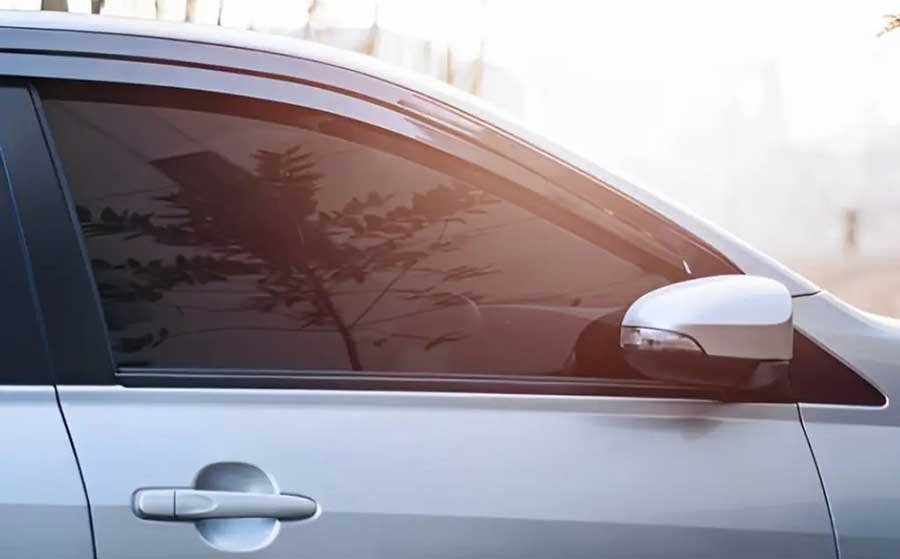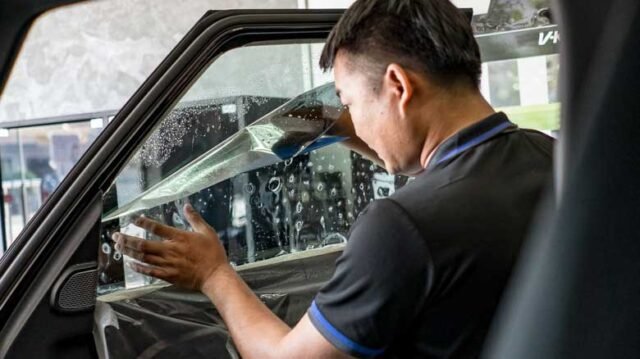When it comes to upgrading your vehicle, few modifications offer the practical benefits and sleek look that window tinting does. With several types of window tint available, it can be confusing to determine which option best suits your needs, lifestyle, and budget. Whether you’re after protection from UV rays, enhanced privacy, or simply a cooler ride, the right window tint film type can make a big difference.
Throughout this article, we’ll break down the most common window tint film types, compare ceramic vs dyed tint, discuss carbon window tint, and help you discover the best tint for cars in various situations. You’ll also find insight into the pros and cons of tint types to make an informed decision.
Before we dive into the specific options, let’s first understand what window tints are and why choosing the right one matters.
• What Are Window Tint Films?
Purpose of Tinting
Window tint films are thin layers of material applied to the inside of car windows. Their main purpose is to reduce the amount of sunlight that enters the vehicle. This helps in lowering interior temperatures, minimizing glare, protecting against harmful UV rays, and adding privacy.
Additionally, certain types of window tint can enhance a vehicle’s appearance and improve safety by holding shattered glass together during accidents.
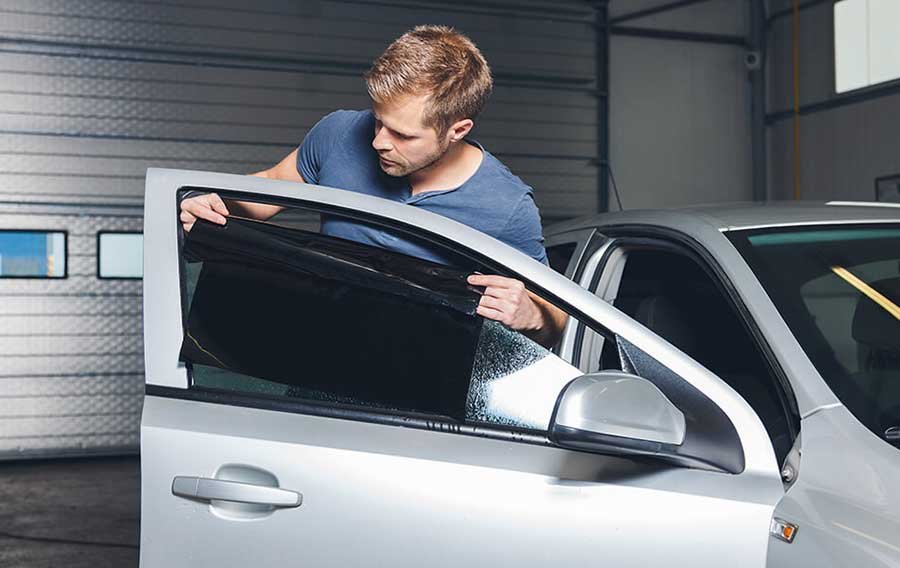
Importance of Choosing the Right Type
Not all tints are created equal. Some focus on heat reduction, while others are more affordable but offer limited performance. Choosing the right window tint film type depends on various factors like climate, budget, aesthetics, and legal regulations. Understanding the pros and cons of tint types will help you avoid costly mistakes and ensure long-term satisfaction.
• Dyed Window Tint
How It Works
Dyed window tint is the most budget-friendly option and one of the earliest tinting technologies. It’s made by placing a dye between layers of adhesive and protective film. This dye absorbs solar heat and darkens the window, reducing visibility from the outside.
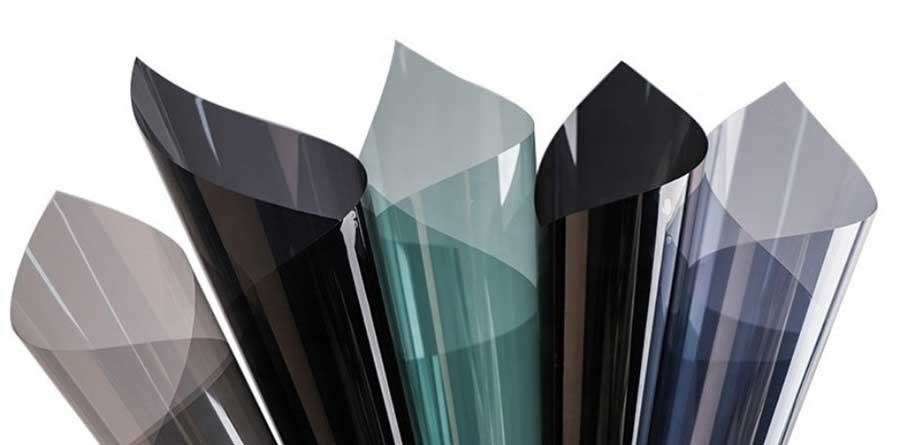
Pros and Cons
Pros:
• Inexpensive and widely available
• Non-metallic, so no signal interference
• Offers a uniform, dark appearance
Cons:
• Fades over time due to UV exposure
• Lower heat rejection compared to other types of window tint
• Less durable
Dyed film is a great choice for those looking for basic privacy and a sleek look without spending too much. However, if you’re seeking high-performance benefits, you might want to explore more advanced window tint film types.
• Metalized Window Tint
Heat Resistance and Glare Reduction
Metalized tints contain small metallic particles embedded in the film that reflect heat and UV rays. These films offer superior glare reduction and help keep interiors cooler, making them ideal for hot climates.

Downsides (e.g., signal interference)
Pros:
• Excellent UV and heat rejection
• Strong and scratch-resistant
• Long-lasting
Cons:
• Can interfere with GPS, mobile phones, and radio signals
• Has a shiny or mirrored appearance, which some may find unattractive
• More expensive than dyed tints
If you value performance but rely heavily on electronics inside your vehicle, the pros and cons of tint types like this one need careful consideration.
• Carbon Window Tint
Benefits for UV and Infrared Protection
Carbon window tint features carbon particles that block infrared light, reducing heat and preventing interior fading. Unlike metalized tints, it doesn’t interfere with electronics and gives a matte finish that’s popular among car enthusiasts.

Durability and Aesthetics
Pros:
• Great heat and UV blocking abilities
• No signal interference
• Stylish matte appearance
• Doesn’t fade over time
Cons:
• More costly than dyed or basic metalized tints
Carbon tint is an excellent mid-range option, combining performance with aesthetics. It’s often recommended as one of the best tints for cars where appearance and function both matter.
• Ceramic Window Tint
High-End Performance
Ceramic tint is considered the premium choice among all types of window tint. It uses non-conductive ceramic particles to block up to 99% of UV rays and a significant amount of infrared radiation. This film provides top-tier clarity, heat reduction, and shatter resistance.
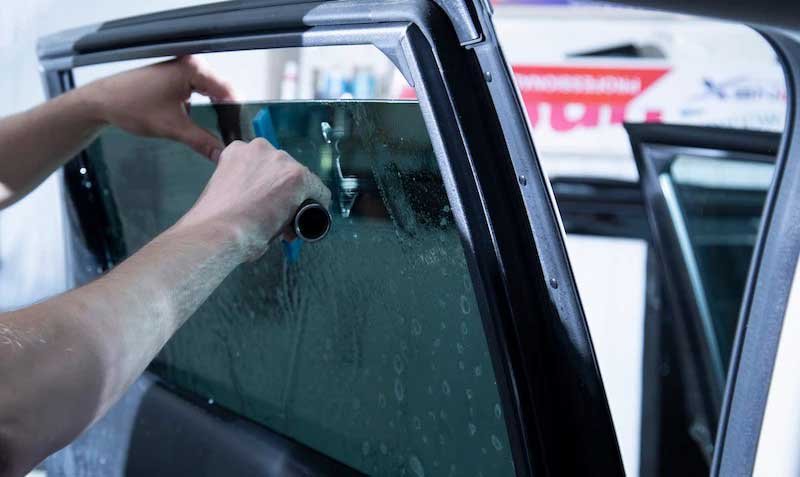
Is It Worth the Price?
Pros:
• Superior heat and UV rejection
• No signal interference
• Maximum visibility and clarity
• Extremely durable
Cons:
• Most expensive window tint film type
When comparing ceramic vs dyed tint, the difference is night and day. While ceramic may be pricier, the long-term comfort, safety, and vehicle protection can be well worth it, especially in harsh climates.
• Crystalline and Hybrid Tints
Special Features
Crystalline tints, like those from 3M, are designed to block heat and UV without a dark tint, making them legal in more areas. Hybrid films, on the other hand, blend dyed and metalized layers to provide balanced performance.

Pros:
• Crystalline: Offers high UV/IR rejection with light visibility
• Hybrid: Combines cost-effectiveness with decent heat reduction
• More discreet appearance
Cons:
• Crystalline: Expensive
• Hybrid: Still may have mild signal interference
These window tint film types are ideal for drivers who want high performance with minimal visual changes or those navigating strict tinting laws.
• Which Tint Type Is Best for You?
Choosing from the many types of window tint depends on your personal needs, environment, and budget. Here’s how to decide:
Consider Your Budget
• Low Budget: Dyed tint
• Mid-Range: Carbon or Hybrid tint
• High-End: Ceramic or Crystalline
If you’re simply looking for a stylish upgrade, dyed or carbon tints can be sufficient. But if you spend a lot of time driving or live in sunny climates, investing in ceramic can pay off in comfort and longevity.
Climate and Legal Limitations
In sunny areas, high heat rejection is crucial, so prioritize ceramic or carbon tints. In cooler or cloudy regions, dyed or hybrid options may be enough. Always check local tinting laws regarding visible light transmission (VLT) to avoid fines or removal.
Personal Style Preferences
Do you prefer a matte, mirrored, or invisible look? Window tint film types vary in finish:
• Matte: Carbon tints
• Shiny/Mirrored: Metalized tints
• Clear with performance: Crystalline tints
• Dark and sleek: Dyed or ceramic tints
Your vehicle’s appearance can be greatly enhanced based on the tint you choose, so match the finish to your taste.
• Conclusion
Final Thoughts and Recommendations
Choosing the best tint for your car involves more than just picking a shade. Understanding the types of window tint available—dyed, metalized, carbon, ceramic, crystalline, and hybrid—allows you to weigh their benefits and drawbacks.
To recap:
• Go for dyed tint if you’re on a budget and want a basic look.
• Choose metalized for better performance but beware of signal issues.
• Opt for carbon window tint for style and solid heat rejection.
• Select ceramic tint if you want the ultimate in comfort and protection.
• Consider crystalline or hybrid if laws restrict darkness or if you want discreet performance.
Whether you’re focused on heat control, durability, or just upgrading your vehicle’s style, there’s a perfect window tint film type for your needs. Take time to compare the pros and cons of tint types and consult a professional installer to get the best results.



